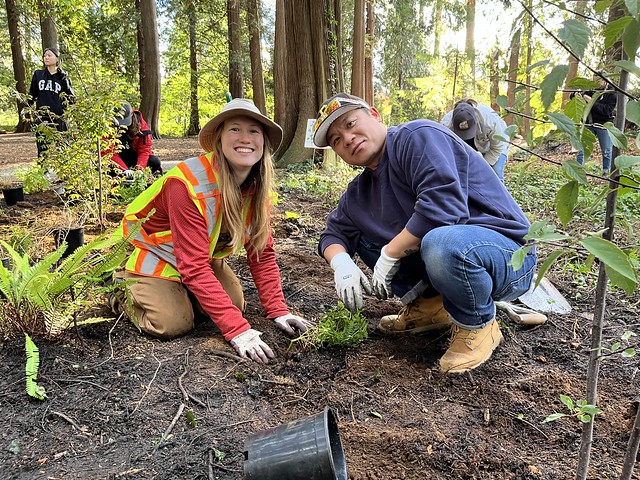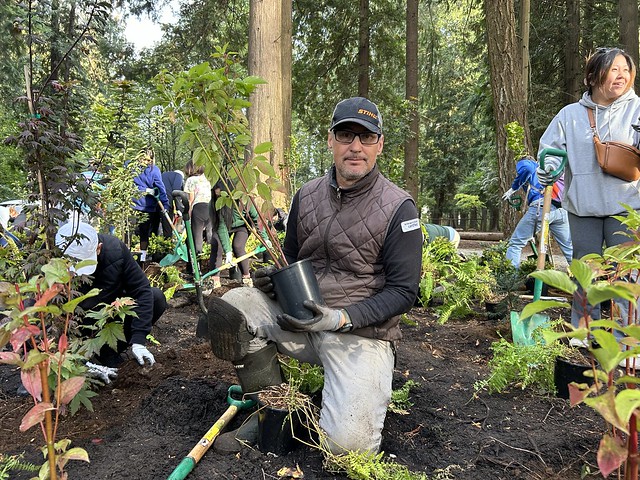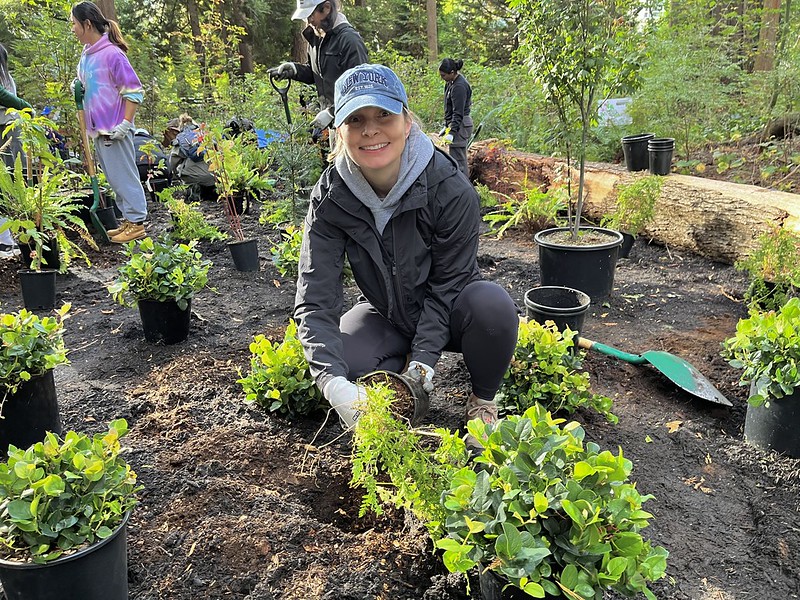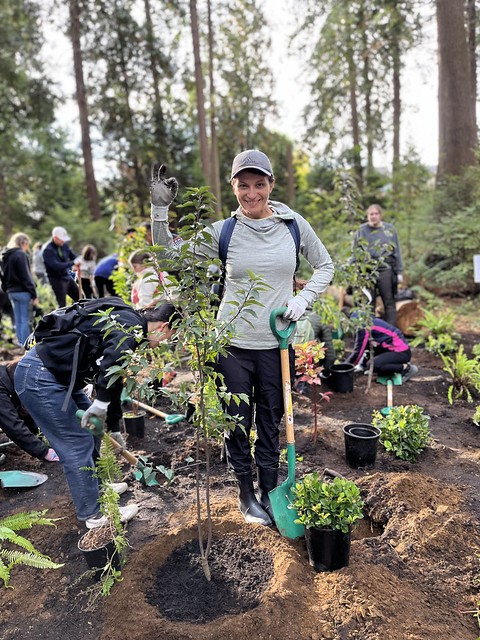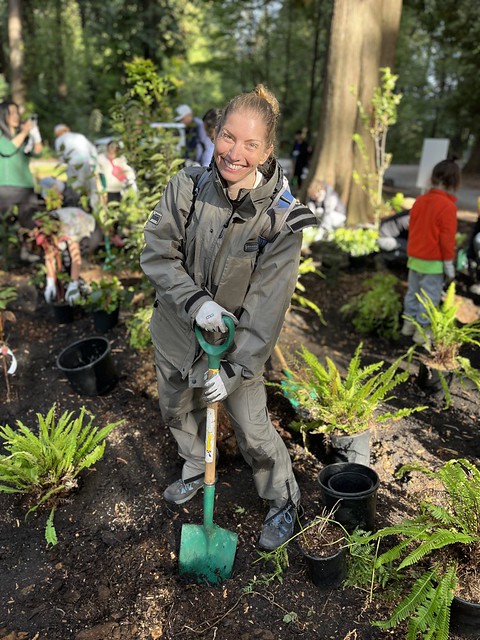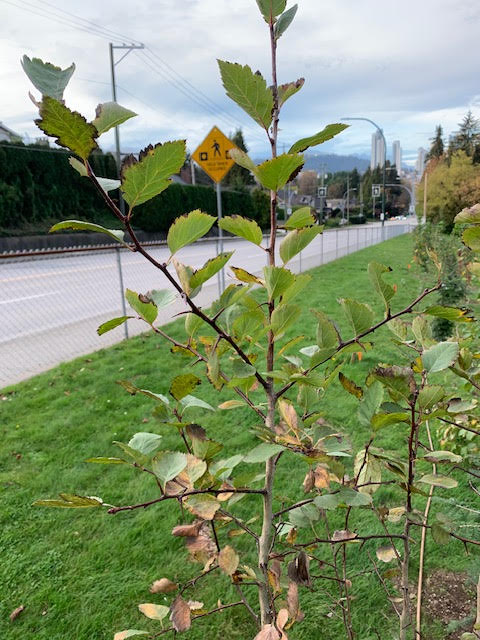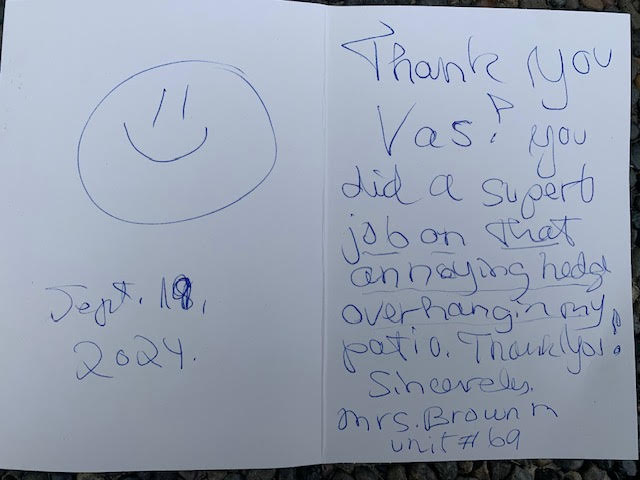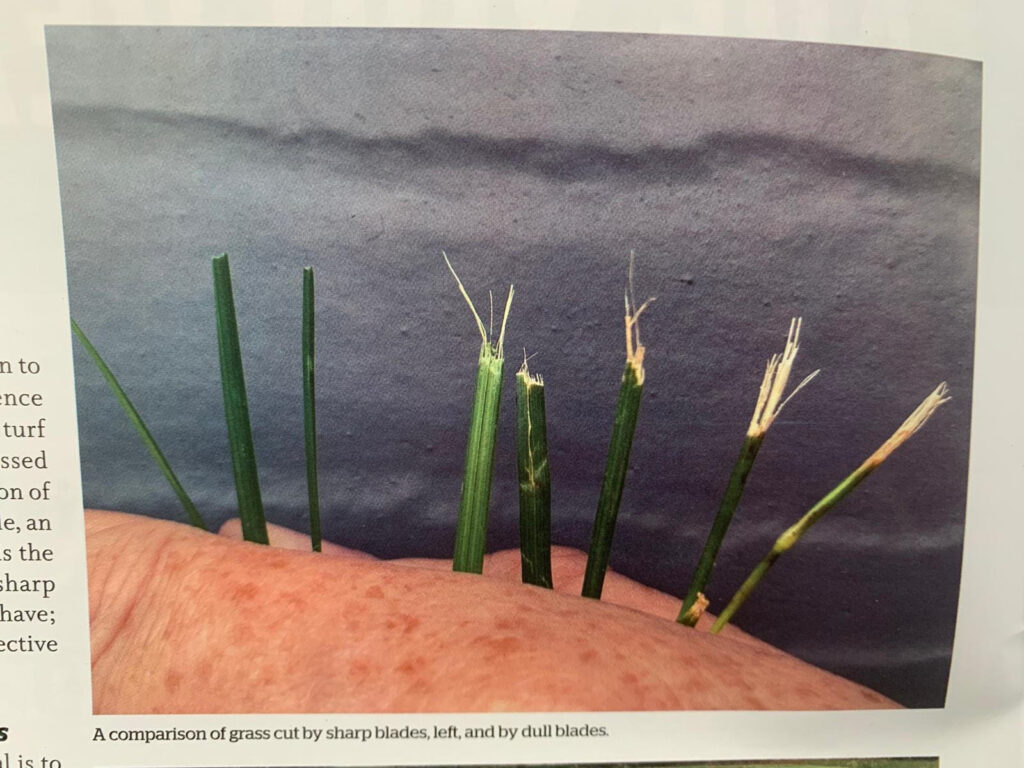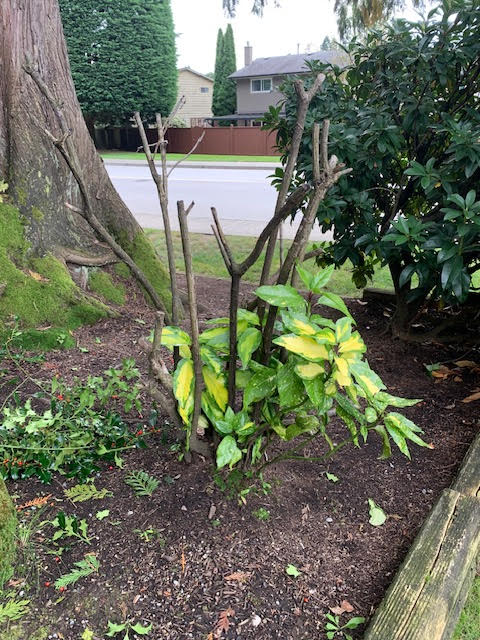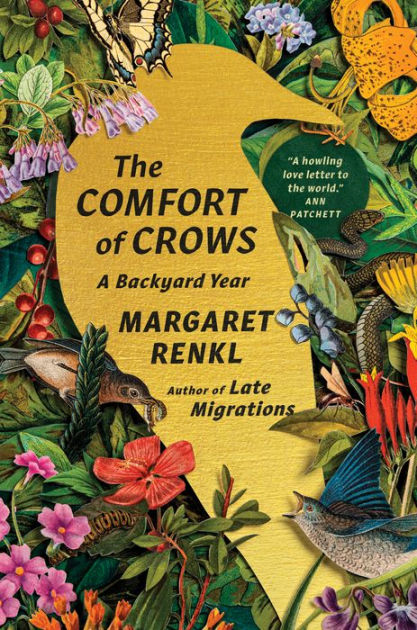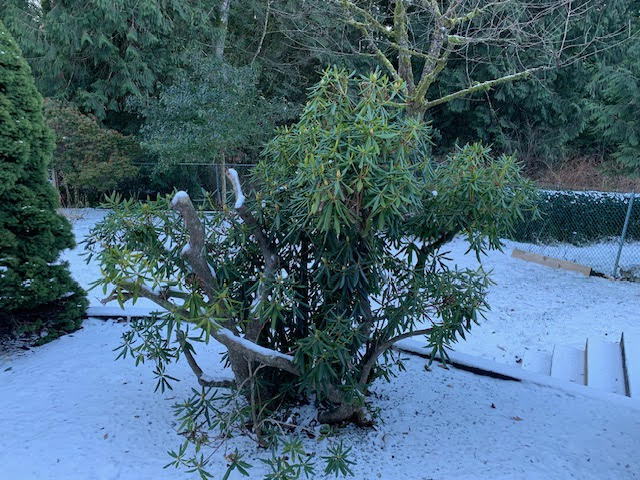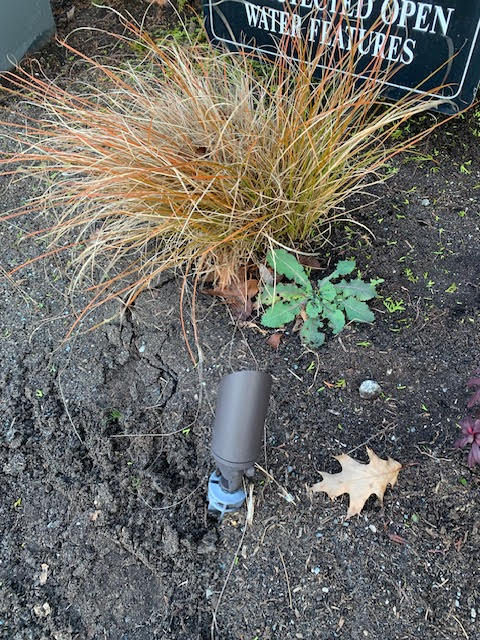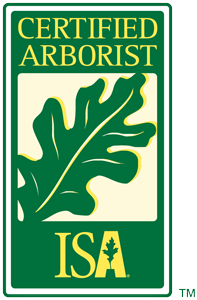Low & high profile
One of my favourite planted beds stands outside the fence so it’s low-profile but, because it faces a busy street, it’s also high-profile. I call it low-profile because people living in the complex don’t see it much.
It’s a simple bed planted with rescues but we can draw several important lessons from it.
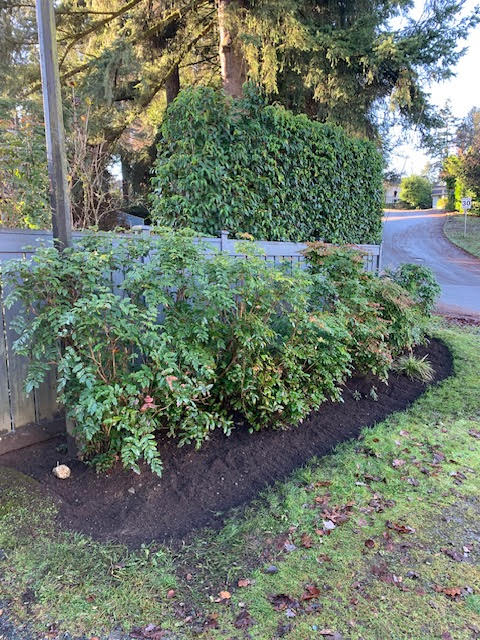
No discrimination
This is my favourite theme in garden and landscape maintenance: don’t discriminate! Check one hundred percent of your place or garden. Don’t ignore low-profile corners or fence lines. Even beds on the other side of the fence.
I went in recently and cleaned it up fairly quickly. First raking and then weeding and cultivating. Using tools is much faster and more efficient; I only pick big weeds with my fingers. Always use tools.
Cultivation gives you a nice fluffy look and this neglected bed deserved it. Often the excuse is access because the gate requires a key. Or does it? I stuck my snips in the door and opened it easily. No excuses!
Plant rescues
This bed is also planted with rescued plants which makes me very happy. Instead of dumping perfectly good plants into green waste I put them here. And they’ve doubled in size. Mostly we have Mahonias and Nandinas with one sedge (Carex). All of them were unwanted rescues and they’re doing fine years later. Even without irrigation.
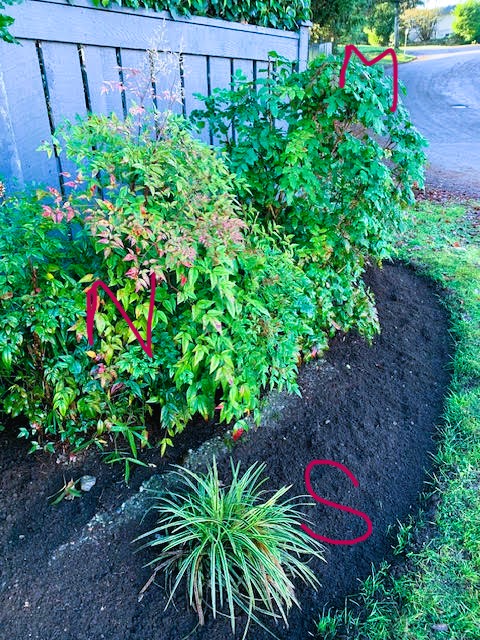
In the beginning we installed new soil because there is a buried beam. It was sticking out and looked awful so we buried it with soil. Now that I look closely at the picture above, I can see the beam. Soil and mulch break down over time so don’t forget to top up your planted beds. At least the beam is partially hidden.
After soil came the rescues which, incidentally, cover up the ground and limit weeds by shading and outcompeting them. Bare beds are a disaster waiting for weeds to move in. If you have bare beds, plant something.
And if you have extra plants, share them or sell them.
Conclusion
Don’t forget to check every corner of your garden; don’t just focus on the front of your house. And if you have extra plants, green waste should be your last option. You can share your plants, give them away to friends or strangers or sell them online. I’ve done both with success.




